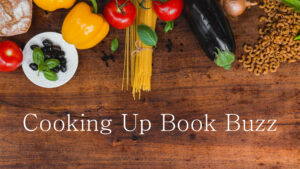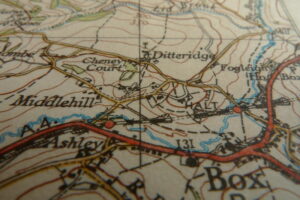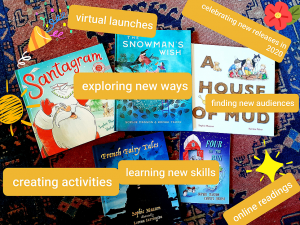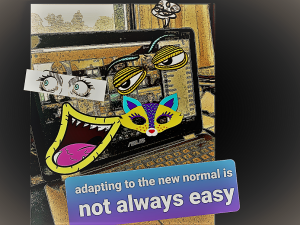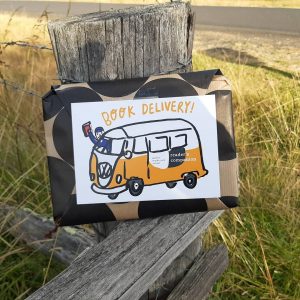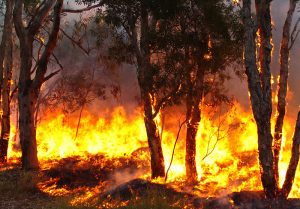Posts by Sophie Masson
Naming characters is one of the fun things about creating stories. But it can also be one of the most troublesome. Sometimes names for your characters just pop into your head, other times you have to do quite a bit of research to find the perfect one.
I’ve been thinking of that because of my experience of writing my two most recent manuscripts for children (both as yet unpublished, but one already contracted). In one, the naming process was a breeze whilst the other necessitated a great deal of looking-up of quite specialized information before I could make a final decision on characters’ names.
I have to confess it’s a rather skewed comparison of extremes because whilst the first book, Four Up In Lights, is the third book in a chapter book series I’ve been writing, the other, The Key to Rome, is a standalone historical novel set in Roman Britain. Chalk and cheese, oranges and apples, you might say. But even so, the experience with both books still stands. Although with Four Up In Lights, all my main characters were already named, I still had to find names for several new characters and they all had to have the same ‘feel’ as other characters had had in earlier books because all the characters in the ‘Four’ books are vehicles of some sort, from cars to tractors to planes to boats. I had to create names that sounded like they might belong to machines but which weren’t too alien, as it were. And even though with The Key to Rome I had to devise authentic-sounding names for both my Roman and British characters, I found wonderful inspirations from excellent sources online, including this marvelllous site which gathers together Celtic personal names of Roman Britain and made my task of choosing good names for my British characters much easier. Online articles about Roman naming customs also helped a lot.
Sometimes, too, the name game falls between those two extremes. You don’t have to do a lot of research but you do still have to do a lot of thinking. The character’s personality, background, and fate even can come into play when you’re making those decisions, as can the time in which your story is set. This includes not just more distant historical periods but also more recent times. For example, if you’re writing about someone growing up in the 1980’s, you need to know what names were popular then. You wouldn’t necessarily give them one of those names, because there are lots of ‘classic’ names that have been common across many periods, but you might perhaps give a couple of people in their peer group those fashionable names, to help create atmosphere. Looking up sites of baby names through the decades, such as this US database, can help a lot with that. And it goes without saying that characters who come from countries or cultures other than your own need to be appropriately named—though that doesn’t mean you have to go with traditional names there either, as most cultures go through fashions when it comes to baby names. If you want to delve a bit more into that, a good tip is to […]
Read MoreIn an earlier post for WU, I wrote about the process of writing my audio-first novel for adults, A Hundred Words for Butterfly, and how it had differed from other novels I’ve written, because of the fact I specifically created it for the audio format. Well, this week the novel has been officially released by its publisher, Spineless Wonders Audio, and is available now for purchase on lots of different platforms, including Google Audio, Kobo, Nook, Libro, Authors Direct, and others. Audible will also follow shortly. It’s been an amazing and exciting process, seeing and hearing the audiobook take shape as narrator (Sarah Kennedy) sound engineer (Echidna Audio) cover designer (Bettina Kaiser) and producer (Spineless Wonders) worked on different aspects of the book. It’s an absolutely wonderful production, making my story, characters and setting come to warm and evocative life, and I hope listeners will enjoy it and take it to their hearts. (You can watch a lovely trailer for it, which features extracts from the narration, here). But today what I want to write about for this post is highlighting the absolutely brilliant marketing strategy that was devised by the Spineless Wonders team, in consultation with me, to create as much buzz as possible around the book in the lead up to its release. And I thought my observations might be of interest and inspiration to other authors, and not necessarily just in relation to audio novels.
In Australia, Spineless Wonders are known and highly respected for their innovative and dynamic approach to publishing, and their marketing strategy for all their books and events has always been focused on imaginative community engagement. And as we worked on our plan for the marketing of A Hundred Words for Butterfly, that engagement became more important than ever, because a large number of Australians, including but not only in our two biggest cities, Sydney and Melbourne, were (and still are) in lockdown due to an outbreak of the Delta strain of Covid19. (All of us working on it were in that boat). So it was even more crucial to come up with great ideas for activities that would offer people something fun, exciting and creative to do even when they were stuck in lockdown. After much discussion, we decided on three main themes/prongs for these.
First was writing, as represented by the #100words4butterfly writing competition, asking people to submit 100-word stories, poems, etc, inspired by four clever prompts linked to motifs in the book. (Prizes included a copy of the audiobook, plus entries published in a special digital magazine.) This comp was framed and run directly by the Spineless Wonders team and attracted lots of entries and great social media engagement, encouraged by striking marketing assets.
Second was a focus on the beautiful and fascinating Northern (or French) Basque country, which is the setting for most of the book. For this, I created intriguing blog posts and videos around what the Basque country, which is where my mother’s family comes from, means to me and my family. These were then shared on […]
Read MoreAt the moment I’m writing a historical novel for children, set in the Roman province of Brittania (Roman Britain) in the late first century AD/CE. The novel involves a great deal of journeying, as the main characters attempt to meet up with someone who always seems to be a day ahead of them, and whom they have to chase after from town to town. Eventually they do catch up with him, but not in the way they hoped and it makes matters much worse as they then have to flee cross-country to escape pursuers! This is the part I’m up to, and I know my poor exhausted characters still have a way to go!
Most of my novels in fact involve journeys of one sort or the other, it’s a natural theme of my writing—perhaps because I was brought up between two countries, France and Australia, and we travelled so much as kids. But in this one, the structure and plot of the novel absolutely depend on the physical journey. Now when you’re writing a novel like that, you have to work hard to make sure that the constant traveling doesn’t get boring for the reader (as well as tiring for your characters).
First of course you have to have a very good reason for the journeying–a quest, a pilgrimage, an escape—and then you have to make sure that it’s not just a question of going between places in an ordinary-travel kind of way; things have got to happen which divert, change or scupper the route plans the characters might have had, sending them off course.
Then comes logistics.
If you’re writing a novel set in an imaginary place, you can of course plot out the route how you like. But if you’re writing a novel set in a real place, then you have to also consider real travel routes, real maps, real geographies. And if, like me, you are writing about a place in the past, especially the distant past like the Roman Empire, then you have to be very careful that your route would have been at least feasible (even if not necessarily likely) at the time.
There are lots of useful maps on the Internet but my absolute gold-standard here is a brilliant Ordnance Survey large fold-out paper map of Roman Britain that I bought some years ago and which has really come into its own with this book. With it I can see easily and exactly where all the towns and settlements were, as well as the geographic features which could present obstacles—e.g. mountains. I can plot my characters’ zig-zag route with ease. It helps that I’ve actually been to some of the modern-day incarnations of those places on the map so that even if of course the towns don’t look anything like they did in Roman days, there are remains of Roman buildings, and Roman artifacts in local museums, and of course the geography is the same.
I also have to consider other things such as: how many (Roman) miles would a horse have been able to go before having to be rested; how many inns there might have been on the way; outside of roadside inns and towns–and most of Britain was very rural at the time–where […]
Read MoreLast December, I got some welcome pre-holiday news: I’d been awarded a small project grant by Create NSW, the state arts funding body for New South Wales, to develop an unusual sort of novel. Called A Turn off the Path, it would be for adults this time, rather than for my usual audience of children and young adults, but that’s not what was unusual about it. What was unusual is that I would be writing the novel for the audio format primarily, not print. That was inspired by the Audible Original range of audio books that are written for audio first and may or may not be published in print later. I’d been listening to a few of them, as well as to more traditional audio books, ie those that are published in print primarily, but with an audiobook edition as well. I wanted to see how that would work in terms of whether my creative process might have to adapt to something that is absolutely designed to be read aloud, but would still be a novel, not a play or a podcast.
Here’s how I worked my way through the challenge.
The novel is set in 2017, in the town of St Jean Pied de Port (Donibane Garazi in Basque) in the French Basque country. It’s a picturesque town which is a very popular starting place for people to go on the famous Camino del Santiago walk, and when the novel starts, my main characters, Australian twins Helen and Alex, have arrived there to begin the Camino. But misadventure means Helen has to stay behind in the town while Alex goes on ahead, and a very different experience ensues for the two sisters, especially after Helen unexpectedly meets up with an old schoolmate who has come there not to go on the Camino but to investigate his family’s Basque roots. The inspiration for the Basque theme comes directly from my family: on my mother’s maternal side, we have Basque family roots both in the French and Spanish sides of Euskal Herria. And I’m very familiar with its settings, culture and atmosphere, especially on the French side, as we have lots of uncles, aunts and cousins there and frequently visited both in childhood and adulthood, while recently some of my siblings have settled there as well.
What I wanted to do in the novel is highlight that strong sense of Basque landscape and culture and atmosphere yet without the novel turning into some sort of guidebook or containing boring infodumps. And I wanted it to be character-driven, with two main points of view—ie Helen and Alex’s—which would be conveyed in different ways: straight narrative in Helen’s case, blog posts in Alex’s, with phone conversations between the sisters also conveying their relationship as well as plot progress and general feel.
That’s all by way of background; but how does all that translate into the actual writing process? I’m still writing the novel at the moment but am well past the halfway mark now, and there’s a few things I’ve learned already which may be of interest:
Read MoreMy latest book, a YA speculative fiction novel titled The Ghost Squad, is out this week. I’m delighted, of course–and thank you so much to WU for helping me celebrate its release with a Take Five interview!
That also got me thinking about new releases, how we go about celebrating them, and the different things authors do to highlight their book to readers, so this what I want to look at, in my first WU post for this new year. In the age of COVID, many of us are trying to come up with ingeniously new ways of celebrating new releases…
In my own case, both in the past and more recently, I’ve done a selection of many things over and above what my publishers have done, and all planned well ahead of release time. For example, in 2020 I did all of the following, to help to highlight my five new releases–it was a big year for new books for me and I had to work pretty hard to try and showcase them! Of course I didn’t do all of these things for each book, just a selection, as appropriate:
These all had varying degrees of success, but most worked quite well. Some were more time-consuming than others, of course. And one of the things I found in 2020 when it came to publicizing my new releases was that though reviews were really hard to come by–harder even than usual–people seemed much more interested in doing author interviews. I was invited to do several over the year, both in video and podcast, as well as being included in video series—readings, talks–initiated by children’s literature organizations specifically for the purpose of supporting authors and illustrators.
In the case of other authors, here are some things that I’ve seen people do:
Read MoreIn this strange stay-at-home year, publicity and marketing for authors has been more difficult than ever. It’s not just that physical in-person launches, events, school visits and festivals have had to be cancelled, postponed or streamlined to be shifted online. It’s also harder to get publicity materials into the usual outlets, and social media has also seemed less receptive to the usual kind of book news. Book people generally have had to invent new ways of connecting with readers and spreading the word about new books whilst providing an entertaining and engaging distraction from the general news.
In my case, as I described in a previous post, I’ve been experimenting with different kinds of online presentations, but what I want to discuss is a form of online presentation which I’ve really enjoyed creating. I call it an illustrated video talk for want of a better, more elegant phrase (any suggestions as to that gratefully accepted!). It’s a mix of PowerPoint slides and audio commentary, turned into a simple video which is easy to make and upload to You Tube or other video channels. The primary focus of these videos is not straight-out book promotion per se–though hopefully they will arouse interest in the book or books discussed in the video. Instead, I intend them to be intriguing, informative and maybe even useful–glimpses into my creative process, inspirations and the writing life generally. Thus they would fit within an overall author strategy, rather than just single-book promotion or even multi-book promotion.
The beauty of these illustrated video talks is that you do not need to be a professional video-maker to create them, or to have access to expensive high-quality equipment. Of course you won’t have the ‘live’ feel of the ‘talking head’ video, but you also avoid issues like mediocre web-cam quality, umpteen takes, large file sizes, etc. And in my opinion you get the ‘storytelling voice’ across more strongly, as there’s less to distract you. Don’t expect them to get you lots of ‘hits’ unless you are very lucky, but do expect that you will be creating some very useful and practical resources, not only to put on your sites and social media, but to give out as links to people who might consider booking you for other kinds of presentations, as well as for school visits, for publishers’ marketing, etc. And they are fun to make!
The basics of it are easy: You write a simple script, use Power Point to create the original series of slides based on important pointers in your script, with illustrations, then record your commentary with the Audio function in PowerPoint (you can also add music if you want). After saving the file in PP, export it to an MP4 format, then upload to YouTube, Vimeo, etc.
Of course there’s more to it it you mean to make something that goes beyond a simple ‘hey, look at this book’ notion. So far I’ve made three of these illustrated video talks: one which looks at the inspiration and process behind the creation of several of my picture books; one about the inspirations and sources behind my new retellings of French fairy tales; and one in a great […]
Read MoreA few years ago, I wrote posts for Writer Unboxed about writing middle-grade fiction, as well as young adult fiction, and picture book texts.
Today, as my new book, Four on the Run, has recently launched, I’d like to talk about writing chapter books. Chapter books are part of what may be loosely termed ‘junior fiction’, for readers between 5-9 years old. Readers of that age still read picture books, but they like longer stories, too, though many aren’t quite ready for that leap into the lengths of middle-grade. Of course, depending on the confidence of the young reader, texts may vary in length and complexity, so junior fiction texts may be between 5,000—20,000 words or so, and include different genres, including fantasy, humor, family and school stories, adventure, and lots more.
Chapter books, sometimes known as ‘early readers’, are at the shorter end of the junior fiction scale: usually between 5,000—7,000 words. They are ‘mini-novels’ with a smallish number of short, sharp chapters (between 7-12 chapters is common) and at least one or two illustrations (usually black and white) per chapter. These illustrations are often full page but may also be half page or even inset. Fantasy and humor are very common genres in chapter books, as are family stories. They may be published in a different size to other junior fiction and middle-grade books—often a slightly larger size, with print size also being larger. They are always attractive books, with bright covers and snappy titles.
I have written a number of junior fiction books over the years, but Four on the Run is my first actual chapter book, and I thoroughly enjoyed writing it—the length limitation of chapter books acting not only as a challenge but as a spur to ingenuity and creativity. Indeed I enjoyed it so much that right now I am in the middle of writing the sequel to it, Four All At Sea. So here are some tips for the chapter book format, based on my experience and looking at the books of some other authors I know:
Read MoreLike most professional writers, I’ve always supplemented my writing income with speaking gigs—workshops, talks, presentations of all sorts, both for adults and for children. Although over the years I’ve presented the odd Skype or other remotely-delivered live presentation, the vast majority of my speaking gigs have been face-to-face and in person. They’ve often involved travel of some sort or the other—usually long distance, sometimes close to home.
Since late March, when the shutdown began here in Australia, that’s not been possible. Things are easing now where I live–we can travel now, at least within our State, that’s not the issue—but it still isn’t possible to return to the old speaking-gig model. Schools aren’t keen on having outside visitors, libraries’ hours are still restricted, and adults who usually attend workshops don’t really feel confident yet about the face-to-face experience. Like so many, I’ve had to learn to pivot pretty much exclusively to online presentations, and in the process I’ve learned quite a few things about the differences between online and in person, and how to best adapt a model I’ve evolved over the years I’ve been doing these gigs.
As I mentioned earlier, I’ve done the odd Skype or other online live presentation before, so I wasn’t unfamiliar with the remotely-accessed method of delivery: but all those previous presentations were talks, not workshops. Talks, like conference presentations, don’t need a lot of adaptation to present online—you give your talk, people sit there and listen, and then they ask questions at the end, which are hopefully moderated by whoever is the organizer. You do miss some of the buzz of the in-person audience, the expressions on people’s faces, etc. But it works pretty well, still. Some of the talks I’d given online had been to multiple schools at once, through a Department of Education closed system, and they worked like Zoom does, with muting of microphones etc. I’d be based in one of their studios which enabled the use of an electronic whiteboard, or ‘smartboard’ as it’s known here. The main challenge with those was making sure every school could contribute to question time. The Skype talks I’d given meanwhile had been to individual schools, one at a time, and that was easy because apart from not being in the classroom, it was, well, pretty much the same as being in the classroom 😊
Read MorePhoto by Sophie Masson
Even before I was published, writing, which to me has always been about the weaving of stories for other people, has been part of the very fabric of my life and my being. Since my first book was published, thirty years ago precisely, I have felt lucky, indeed, blessed, to earn my living doing what I’ve always felt I was born to do. Aside from my public work, working emotions out through writing them down in journals and diaries has always helped put things into perspective in times of personal crisis.
Two horrors happened in quick succession where we live last year: severe drought and wildfires. In an earlier Writer Unboxed post, What Do You Save? I wrote a bit about that—the first time I’d been able to write anything public about what it felt like, despite having written a fair bit about it in my journals. It had taken months to process those feelings into anything properly coherent, and during that time I also turned to a childhood love, painting. The feel of the paint on the paper, the sweep of the brush, was a calming and helpful thing, and as non-public as the journal writing. Then the fires stopped and the rains came, ending the drought. Everything turned green, gloriously green, and the joy of it ran in my writing veins like that life-giving water. It didn’t last long, that joyful respite. All around the world humans are facing another kind of horror, invisible this time, but more dangerous, unpredictable and baffling. Strangely, it’s reversed the previous situation for us here in one way: drought and fires made our home feel unsafe; now the pandemic can make our home feel like the only safe place.
Like most writers, I’ve always worked from home, at my messy desk in the lounge room. I have never had any problem with disciplining myself, or had writer’s block, though there are times when I’ve written more than others, or less, depending on what else was going on. Flexibility has always been part of my modus operandi. When working from home is no longer a choice for you but an absolutely must, and your family scattered far and wide, your friends, and indeed everyone else you know must do the same, even if they normally go to offices or other separate worksites, then it changes the story. Played out within a wider global plot-line of nightmarish intensity and bizarre, surreal twists, and against personal worries for the safety, health and economic well-being of loved ones, friends, neighbors and local communities, this story of a writing life transformed might seem little. It is the one I know best, though, and certainly the only one I feel qualified to expand on publicly. Here are some of the impacts that these singular times have had on my own writing life, and how I’ve tried to deal with it. I offer this in the hope it might help other writers struggling with similar things.
Read MoreFlickr Creative Commons: Sarah Scicluna
Presenting writing workshops has been very much a part of a professional writer’s life for a long time now, and it’s only increasing as an important source of a writer’s income. Indeed, in a time of contracting publishing lists and vanishing advances, for some writers it may be the major source of income. Some are still resistant to the idea of attending workshops, quoting the traditional truism ‘you can’t teach writing,’ but good workshops offer three very important things, especially for aspiring authors: inspiration for new directions, the honing of craft, and the opportunity to connect with like-minded people.
Over many years of giving writing workshops all around the country as well as overseas, I’ve learned ways to successfully tailor workshops for different audiences and age groups. In this post, I want to pass on some tips for both the creation and presentation of workshops.
Creation
Read More
Flickr Creative Commons: bertknot
I’m writing this having just come back from a morning walk up the road, enjoying a sight we haven’t seen in much too long in our area—water running and singing to itself in ditches, water puddling on roadsides, water rushing into dams and tanks…Rain, rain at last! Good rainstorms over the last few days and other showers scattered over the last few weeks, with more forecast to fall in the next few weeks—cross fingers!—has meant that in our immediate area at least, things are looking more hopeful. Here in our high-country region of northern New South Wales, we have been enduring what appears to be the worst local drought since records began in the mid-19th century–we received only one-third of our normal annual rainfall in 2019. Paddocks have been turned to dust, farmers have had to sell or send away livestock, and large numbers of trees have died, especially on the free-draining granite country just to the west of us. Our own heavy clay soil might be a pain to work with in terms of gardening, but it does hold water better, even when you don’t particularly want it to. Trees have died even on our own block, including sixteen tough old cypress pines that well-predate our ownership of this block, and which my husband David has had to cut down due to their becoming a fire risk. Our thriving vegetable garden, pride and joy of green-thumbed David, has had to be abandoned for the moment, apart from the perennials.
It’s not only drought that haunts us, but fire. As people around the world know from the news, Australia is going through a terrible bush-fire (wildfire) season which most recently has seen massive, deadly firestorms tear through large swathes of southern New South Wales, parts of Victoria, and Kangaroo Island in South Australia. Earlier, dangerous fires also broke out in areas such as the Blue Mountains just west of Sydney and other areas close to the national parks that surround Australia’s biggest city to the south, north and west, while Tasmania and Western Australia have also experienced some fire outbreaks. Here in my high-country home region of the Northern Tablelands in northern New South Wales, the fires came even earlier, from September onwards. Conditions have eased in this region now since the most dangerous period across northern NSW and southern Queensland in November, when people died and many homes were lost. The weather has improved slightly and of course the brave and tireless work of firefighters has meant the threat in our area has lessened, though some fires in inaccessible forest and gorge country are still not quite put out. New ignitions and flare-ups are still a worry, exacerbated by the effects of the drought—all those dead trees attracting lightning strikes and, of course, hot days or windy ones drying out the country yet again. So firefighters are vigilant and all of us take nothing for granted, even now with that lovely rain. Like most people in all too many areas of Australia right now, we closely monitor the ‘Fires Near Me’ app which shows you up-to-date information on any fire outbreaks within your nominated watch zones. We’ve got to know […]
Read MoreFlickr Creative Commons: Vicente
Occasionally, you hear writers say they never read the work of other authors, especially writing in the same genre as they are, and especially if they’re currently in the process of writing a book themselves. The reason given is usually that they are afraid of being influenced, whether consciously or unconsciously, by the other writer’s work. It’s a fear that originality may be somehow diminished, or that a kind of helpless plagiarism may happen, which will then destroy their own literary integrity. Underlying this is perhaps an even deeper fear: that they may discover that those other writers’ books are actually vastly better, leading to a major paralysis in imagination and the feeling that as they’ve said it all anyway, why bother?
I understand those feelings—the writing life is quite often competitive, stressful, and prey to many fancies and fears–but I don’t share them. Partly, it’s because of the way I write: a process of complete and utter immersion. When I’m writing, I’m completely in the story, nothing else figures or intrudes, I’m away with the fairies. It quite blanks out anything going on around me–to the great frustration—and delight– of my children when they were growing up. My daughter says she could have asked for a huge rise in pocket money when I was in the middle of writing and I’d have said, Yes, dear, whatever you want, vaguely; and my youngest, our musician son, loves to tell the story of the day he’d spent an entire morning practicing drums loudly upstairs, and when he came down for lunch, and I emerged blinking from my work, I asked him brightly what he’d been doing all morning! I genuinely had not heard him at all. Equally, this immersion seems to blank out what I’ve been reading—perhaps because writing is such a different process to reading, perhaps because that’s the ‘safety switch’ that clicks on in my mind when I start to write.
Read MoreI’ve always loved graphic novels and comic books—the whole art/literary form that in my native language, French, we call BD, short for Bandes Dessinées, or ‘drawn strips/illustrated panels’. In France, BD is an eminently mainstream genre that has been popular with readers since early in the 20th century, and which today represents about 7 percent of the book market. As well as popular appeal across the board, it also has great literary respectability—known as ‘the ninth art-form’, BD books are regularly reviewed in major newspapers and magazines, have exhibitions and festivals devoted to them, and are written about by literary scholars. BD in France covers a wide range of types, styles, genres, markets and ages, and are stocked by every bookshop and library. For children, there’s a vast range of fiction and non-fiction BD, from adventure and fantasy stories to humorous historical sagas to biographies of famous scientific, artistic or historical figures. Having grown up with BD, I never understood the attitude to it in English-speaking countries where in the mainstream at least this was a genre regarded as inferior, suitable only for people who didn’t know how to read properly, and frowned upon as reading material for children. My school library in Sydney, Australia, might have stocked Tintin and Asterix books, and they were popular with us kids, but it wasn’t encouraged reading in the way a non-illustrated novel might have been: and besides, they were French classic BDs, and as such perhaps had a glamour in an anglophone setting that, say, a Superman or Phantom or Donald Duck comic book would not have had. There were certainly none of these in our school library, you had to buy them from the newsagent’s.
The influence of BD on me as a writer was felt early on; the first real sustained series of stories I wrote, as a child in primary school, was about the adventures of a princess called Alicia who had magic powers—and long blond hair, both things I dreamed of having. It was in BD format, with illustrated panels, speech bubbles and narrative, and I loved creating it. Sadly, no copies of it remain—my mother being a great clearer-out of stuff, including her children’s literary efforts, and with seven children in the family, that wasn’t surprising. Imagine the mountain of paper that might otherwise have taken over the house, especially in my case. Anyway, as I grew up and wrote more and more, I continued to love reading BD but stopped trying to create it—mostly because I realized that my own skills in visual art had stayed stuck in primary school 😊 but also because I soon realized that it wasn’t an area that Australian publishers were interested in.
Read MorePhoto by Sophie Masson
We writers know that point of view often comes instinctively, with one or maybe two characters insisting on having their voices heard. But what if a whole gaggle of equally interesting characters are clamoring for your attention? Then you have no choice but to have a go at writing a multiple-POV narrative, and see what happens.
I’ve done that a few times in the past. And I’m doing that right now, with my WIP, which is an adult novel set in an imaginary writers’ retreat in the very real and very charming Loire Valley village of Azay le Rideau, home to my favourite castle in all of France. In the novel, I focus on no less than nine main characters—six writers from the retreat, including five aspiring writers and the writing tutor, who are all Australians, though of different ethnic backgrounds, and three French people, locals from the village itself. (Having French and Australian characters works well for me, as I’m French-Australian myself and know both cultures and countries intimately!)
And I thought WU readers might be interested to hear more about the process of managing all those POVs.
The issue
Nine main characters, mostly women, but all very different personalities, all very different backstories, and from a range of ages and backgrounds: crazy brave, eh? In fact this is the largest number of POVs I’ve ever tried to juggle in a novel (the most in the past has been 4). Within that gaggle of nine, I knew there’d be a few who would be demanding more than their fair share, and would mostly have to be reined in but occasionally needed to be given their head.
I knew from the start that this novel would have to be tightly structured and planned ahead, which is unlike what I usually do; I’m a pantser normally, with the beginning firmly set but not much else.
How setting worked its magic
Read More

